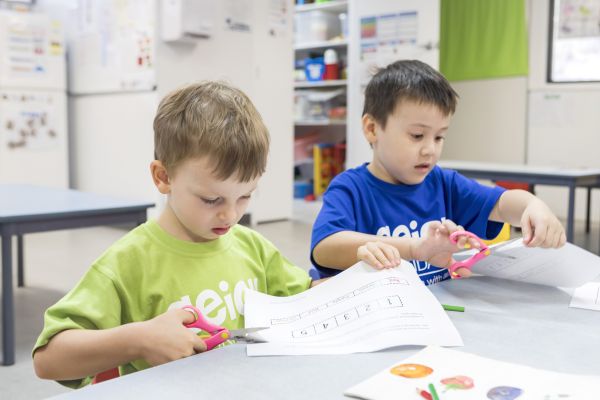
Every day skills are often a challenge for children with Autism Spectrum Disorder. Learning to perform tasks such as dressing, toileting, grooming, bathing, and feeding will often require additional support and teaching.
To help develop independence in each of these areas, a teaching technique called Chaining is commonly used. Chaining is a step-by-step teaching approach that can be implemented in both the school and home environment. Chaining can be taught through procedures such as, forward chaining, backward chaining or total task chaining procedures.
Step One
It is important to choose a goal that it is age and developmentally appropriate for your child. It is beneficial to discuss appropriate goals with your child’s AEIOU therapist.
Step Two
Create a Task Analysis. Simply put, create step-by-step directions to completing the skill. It may be helpful to complete the skill yourself to make sure you have not missed a step or placed any steps in the incorrect order. This will vary for different people and different families.
Step Three
Identify valuable motivators (AKA reinforcers); put some of these on deprivation for a short period to increase their value.
Step Four
If, after consultation with your therapist, it was assessed that ‘backward chaining’ was the most appropriate teaching procedure, it would then be time to teach the behaviour chain beginning with the last step. This means you would prompt every step in the task analysis (that is only if your child is not resisting of course!) and fade the prompts you provide for the last step, delivering reinforcement for the last step completed.
If your child is resisting, stop this process immediately and consult with your therapy team before you continue.
If, and when, your child has mastered the last step, you will move to the step previous. You continue this process until your child can complete the entire skill.
By teaching the final step first, your child gains a sense of accomplishment and is motivated to complete the sequence again. I CAN do this!
Tips to teaching each step
- Reinforce! Reinforce all correct attempts this may look like praise, cheers, tickles, hi-5s, edibles, etc.
- Practise, practise, practise. Create opportunities to perform the skill multiple times throughout the day.
- Exposure. Have yourself and family members model the skill for your child.
- Errorless learning. Begin with a physical hand-over-hand prompt and gradually fade the level of prompting (partial physical, gestural, model, verbal, visual) until your child can complete the step independently. If you are unsure what these prompt levels look like or your child exhibits any resistance, please talk to your AEIOU therapist before you proceed.
- For children who respond well to visual cues take pictures of them doing each step of the task analysis and put them up in the home.
To learn more about helping your child to develop their independence, please come along to our parent workshop on Independence being held at your centre shortly. Parent workshops are free and open to all current families as well as those who are on the waitlist. Find out more at: http://aeiou.org.au/workshops.
About the author: Sally Chamberlain is AEIOU’s Teacher Educator and is passionate about promoting independence in children with Autism. She has been an integral member in the AEIOU team since 2012, primarily at the Nathan centre. Sally holds a Bachelor of Education at the Queensland University of Technology.



































